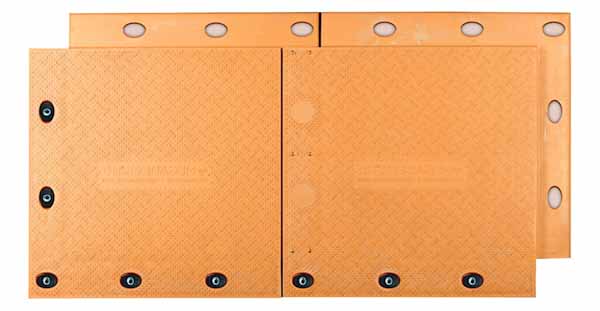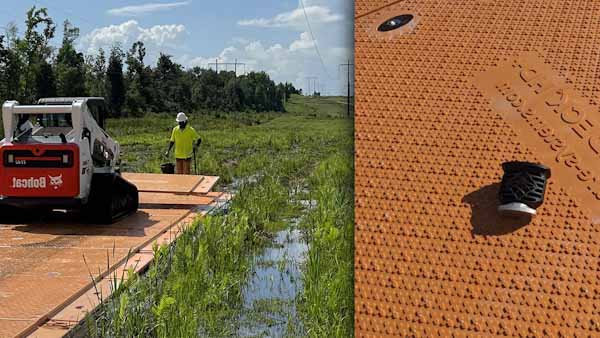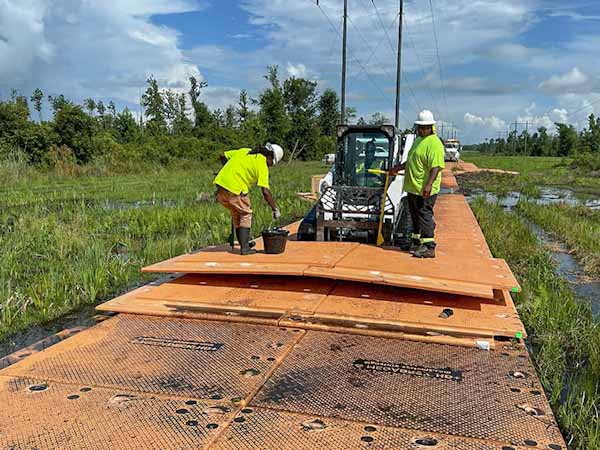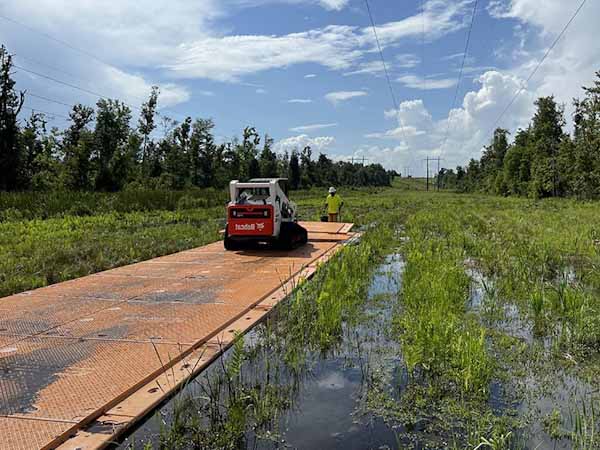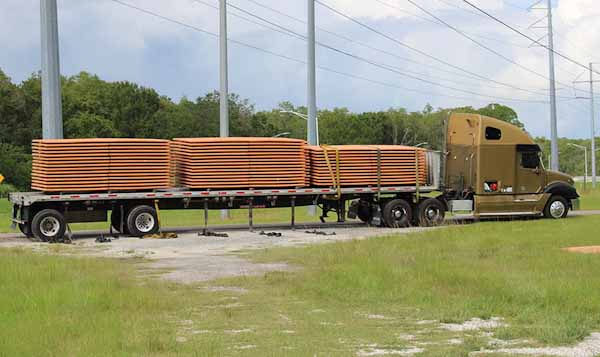Wetland Crossing Mats - 7.5' L x 14' W
FREE SHIPPING
The wetland crossing mats are high-strength HDPE composite mats specifically designed for the toughest environments, including wetlands and swampy areas. They provide a solid and stable platform or temporary access road for heavy machinery, even in the most demanding conditions. The mats are equipped with overlapping flanges and an interlocking design, ensuring they stay securely in place. Their semi-buoyant nature makes them perfect for wet environments, and with a lifespan of over 10 years, these mats offer durability and ease of maintenance, making them a practical choice for multiple job sites.
For MegaDeck installations, the manufacturer recommends using 8 Megadeck pins per mat.
Minimum Order: 5 Mats

